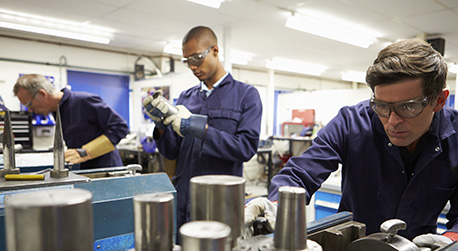Weld testing is a critical process that goes beyond the surface to unveil the true strength and integrity of welded joints. While welds might appear solid and flawless on the exterior, it is imperative to ensure their reliability and durability for various applications. The significance of weld testing cannot be overstated, as the failure of welded joints can have severe consequences in industries such as construction, aerospace, automotive and manufacturing. One of the most commonly employed methods for weld testing is non-destructive testing (NDT). NDT techniques allow inspectors to assess the quality of welds without causing damage to the welded structure. One widely used NDT method is ultrasonic testing, which utilizes high-frequency sound waves to detect internal flaws in welds. Ultrasonic waves are transmitted through the weld and any imperfections, such as voids, cracks or inclusions, will reflect these waves back to the testing equipment. By analyzing the reflections, inspectors can accurately pinpoint the location and size of defects, ensuring weld integrity.

Another critical NDT method is radiographic testing (RT), also known as X-ray or gamma-ray testing. This technique involves passing penetrating radiation through the weld and capturing the resulting image on a radiographic film or digital detector and pop over to these guys https://atslab.com/mechanical-testing/weld-testing/. Discontinuities, such as porosities or incomplete fusion, are revealed as dark areas on the film, helping inspectors evaluate the quality of the weld and make informed decisions regarding its structural suitability. Dye penetrant testing (PT) is yet another valuable NDT technique employed in weld testing. It is particularly effective for identifying surface-breaking defects. During this process, a penetrant dye is applied to the weld surface, which seeps into any surface defects through capillary action. After a certain time, excess dye is removed and a developer is applied to draw out the trapped dye, making the defects visible. This method is relatively simple but highly reliable in detecting surface flaws that may compromise the strength of the weld.
On the other hand, destructive testing methods are employed to assess the mechanical properties of welds by subjecting them to controlled forces until failure occurs. Tensile testing, for instance, involves pulling apart a specimen cut from the welded joint to evaluate its tensile strength, elongation and ductility. Bend tests, on the other hand, assess the weld’s ability to withstand applied bending forces. While destructive testing provides accurate data about a weld’s performance, it is typically carried out on a limited number of samples to avoid compromising the integrity of the overall structure. In conclusion, weld testing is an indispensable part of ensuring the safety and reliability of welded joints in various industries. NDT methods like ultrasonic testing, radiographic testing and dye penetrant testing help inspectors delve beneath the surface to identify defects that might not be visible to the naked eye. Additionally, destructive testing techniques provide valuable data on mechanical properties, further reinforcing the assessment of weld quality. By uncovering the true strength of welded joints, weld testing plays a pivotal role in upholding the integrity and longevity of structures and components, fostering confidence in their performance and safety.